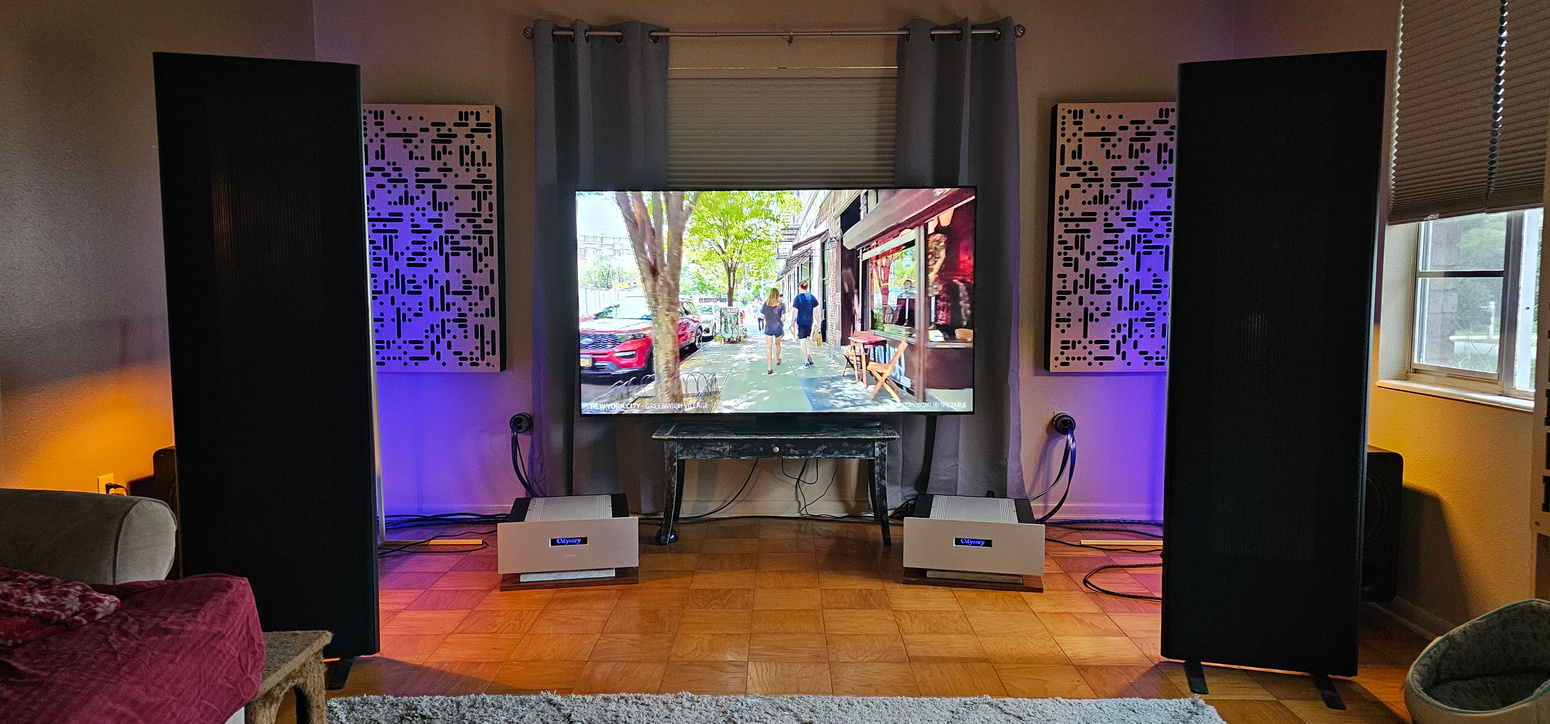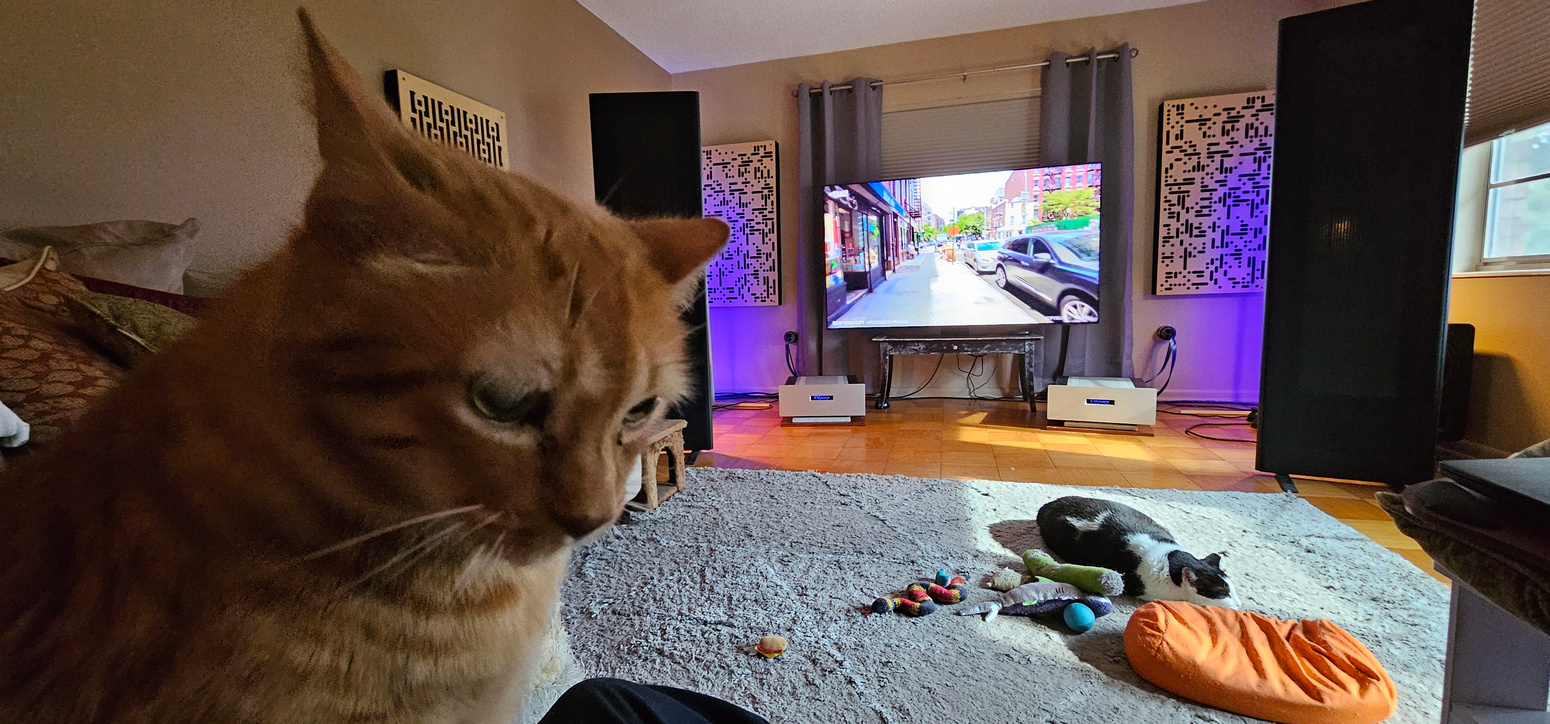Unbalanced Interconnect length...
- Thread starter Chops
- Start date
You are using an out of date browser. It may not display this or other websites correctly.
You should upgrade or use an alternative browser.
You should upgrade or use an alternative browser.
Balanced connections ideally provide higher SNR and can prevent ground loops. They also reject common-mode noise such as might be generated by the digital circuitry in the streamer. If it is working fine with balanced connections I would leave it that way. Sometimes all the problems come from just one component...I was thinking... If this works out as planned, should I also switch my Altair G1 over to unbalanced as well?
I mean, what's the point of running only one piece of equipment balanced if everything else is unbalanced, especially when I can use a 1m or less interconnect from the streamer to the preamp?
Plus, that would just be balanced circuitry having to convert over to unbalanced in the preamp anyway. Am I right in this thinking?
IME/IMO/FWIWFM/etc. - Don
The BJC LC-1's came in today, promptly got installed about an hour ago, the amps got moved back a little so the 1m Wireworld power cables would reach the front outlets, each amp turned back on one at a time, feverishly standing by the tweeters on the Maggies, and...
NOTHING! As in nothing but sweet sweet silence!
I have to be honest, I wasn't expecting that. I was expecting to still hear that buzzing, but it's totally gone.
The only downside, that loud buzzing that comes and goes like it's on a timer, still comes through, BUT... It's extremely quiet now. With nothing playing, you can just barely hear it at the listening seat.
So for me, this is an almost total win-win situation.
I want to thank everyone for all of the advice and suggestions! Now I can concentrate on the other needed upgrades. The fun never stops!


A slight invasion. LOL

NOTHING! As in nothing but sweet sweet silence!
I have to be honest, I wasn't expecting that. I was expecting to still hear that buzzing, but it's totally gone.
The only downside, that loud buzzing that comes and goes like it's on a timer, still comes through, BUT... It's extremely quiet now. With nothing playing, you can just barely hear it at the listening seat.
So for me, this is an almost total win-win situation.
I want to thank everyone for all of the advice and suggestions! Now I can concentrate on the other needed upgrades. The fun never stops!


A slight invasion. LOL

Nice! And congrats.
I've posted elsewhere that you may have read, but my experience with Iconoclast, Galen, Bob and the rest of the team has been nothing short of outstanding. I highly recommend testing them. They're certainly not inexpensive, but at all levels of the line they are exceedingly high value. (Previously I was using Wire World for interconnects and Blue Jeans cable for speaker wires.)
I've posted elsewhere that you may have read, but my experience with Iconoclast, Galen, Bob and the rest of the team has been nothing short of outstanding. I highly recommend testing them. They're certainly not inexpensive, but at all levels of the line they are exceedingly high value. (Previously I was using Wire World for interconnects and Blue Jeans cable for speaker wires.)
Funny you mention Bob, since he's the one I purchased these wonderful Odyssey Stratos amps from. Met up with him to take delivery of the amps. Great guy to say the least.Galen, Bob and the rest of the team has been nothing short of outstanding.
And Galen gave me some extremely helpful advice on another forum about this subject.
FWIW Dept.: most of your recordings are done using balanced lines.here is evidence to support the proposition that balanced connections and balanced cables tend to suppress even order harmonics. I like the sound of even order harmonics, so I would rather not have them suppressed.
Balanced lines in and of themselves do not suppress even ordered harmonics. The associated equipment, if fully balanced internally, might suppress even ordered harmonic distortion, which is something entirely different. When that happens, the equipment is expressing what is known in mathematical terms as a cubic non-linearity (as opposed to a quadratic non-linearity if the circuitry were single-ended). With a cubic non-linearity, the 3rd harmonic (which is treated by the ear much the same as the 2nd in that its innocuous) will be dominant but at a level just slightly less than seen in a single-ended circuit that is otherwise similar topology. As the order of the harmonic is increased, its amplitude will fall off at a faster rate. This is because distortion is compounded less from stage to stage. So you get greater detail, since distortion obscures detail, and often smoother sound since the higher orders fall off at a faster rate compared to single-ended.
But all that has nothing all all to do with balanced line vs single-ended connections.
Buzzing...did I miss something in your earlier posts?The BJC LC-1's came in today, promptly got installed about an hour ago, the amps got moved back a little so the 1m Wireworld power cables would reach the front outlets, each amp turned back on one at a time, feverishly standing by the tweeters on the Maggies, and...
NOTHING! As in nothing but sweet sweet silence!
I have to be honest, I wasn't expecting that. I was expecting to still hear that buzzing, but it's totally gone.
The only downside, that loud buzzing that comes and goes like it's on a timer, still comes through, BUT... It's extremely quiet now. With nothing playing, you can just barely hear it at the listening seat.
So for me, this is an almost total win-win situation.
I want to thank everyone for all of the advice and suggestions! Now I can concentrate on the other needed upgrades. The fun never stops!


A slight invasion. LOL

There is always a perception that even order harmonic distortion, especially of the second order, is euphonic. This has been debunked by psychoacoustic experiments. When second order distortion was added gradually, listeners started to notice a "muddying" effect. No listener actually preferred having second order harmonic distortion compared to the original signal. However, it took a much larger amount of this harmonic to become noticeable when compared to higher order harmonics, esp. of the odd order. This is because of the masking effect of the fundamental.FWIW Dept.: most of your recordings are done using balanced lines.
Balanced lines in and of themselves do not suppress even ordered harmonics. The associated equipment, if fully balanced internally, might suppress even ordered harmonic distortion, which is something entirely different. When that happens, the equipment is expressing what is known in mathematical terms as a cubic non-linearity (as opposed to a quadratic non-linearity if the circuitry were single-ended). With a cubic non-linearity, the 3rd harmonic (which is treated by the ear much the same as the 2nd in that its innocuous) will be dominant but at a level just slightly less than seen in a single-ended circuit that is otherwise similar topology. As the order of the harmonic is increased, its amplitude will fall off at a faster rate. This is because distortion is compounded less from stage to stage. So you get greater detail, since distortion obscures detail, and often smoother sound since the higher orders fall off at a faster rate compared to single-ended.
But all that has nothing all all to do with balanced line vs single-ended connections.
The tone of a violin is >50% second harmonic. If the second order is removed, it will be very noticeable. I have never noticed any difference in the violin tone between a single ended preamp and a balanced differential one (I have Allen Wright's RTP-3C, RTP-3D, and the single ended version FVP-5). A balanced differential circuit will produce less second order harmonics than a single ended circuit, but well designed circuits should not produce noticeable amounts of second order harmonics anyway, balanced or not.
Yes, but this argument, as always, proves too much. This is an argument for using playback equipment and techniques no better than the recording equipment and techniques.FWIW Dept.: most of your recordings are done using balanced lines.
Balanced lines in and of themselves do not suppress even ordered harmonics. The associated equipment, if fully balanced internally, might suppress even ordered harmonic distortion, which is something entirely different.
This sounds correct to me. I've been describing the theory incorrectly. I should've been focusing on the possible sonic effect of balanced inputs and cables suppressing even ordered harmonic distortion.
Could you explain this in greater detail?Yes, but this argument, as always, proves too much. This is an argument for using playback equipment and techniques no better than the recording equipment and techniques.
Could you explain this in greater detail?
I took "most of your recordings are done using balanced lines" to suggest the traditionally pro-audio-type argument that there is no logical basis for implementing on playback audiophile techniques or components when the recording did not employ those (presumably superior) techniques or components in the first place.
In other words just because recording studios used balanced lines does not tell me that my ears might not prefer the even ordered harmonic distortion from single-ended cables in my playback system.
Last edited:
Ah.I took "most of your recordings are done using balanced lines" to suggest the traditionally pro-audio-type argument that there is no logical basis for implementing on playback audiophile techniques or components when the recording did not employ those (presumably superiors) techniques or components in the first place.
In other words just because recording studios used balanced lines does not tell me that my ears might not prefer the even ordered harmonic distortion from single-ended cables in my playback system.
FWIW the cables won't affect the even or odd ordered harmonic distortion in your system. It might interest you to know that one of the more common tape machines used to record a lot of the Golden Era (1958-1960) recordings in the US was the Ampex 350 transport, equipped with the venerable Ampex 351 electronics. The electronics were almost entirely single-ended except inputs and outputs which were handled by transformers.
As I said before, the cables won't have any effect on the distortion, although its very possible that you might get less cable artifact from a balanced connection (if you've ever heard differences between single-ended cables during an audition, this is what I'm talking about). This is particularly true if the electronics (like the Ampex I mentioned) support the balanced standard. Its almost like having no cables at all. Now how your electronics drives the cables might have an effect. Its perfectly possible to drive a balanced line using entirely single-ended circuits. I had custom output transformers made for me that allowed me to build an entirely single-ended set of microphone preamps that had balanced inputs (using Jensen transformers) and a balanced output, using a transformer that was driven by half of 12AU7 (which is a dual triode). The preamps made a 2nd harmonic as their primary distortion product and the cables didn't affect that at all. The real trick here is how to drive balanced lines if all your gear is single ended; the most practical way I can think of to do that is by using transformers.
Similar threads
- Replies
- 5
- Views
- 1K
- Replies
- 36
- Views
- 3K
- Replies
- 0
- Views
- 613
- Replies
- 9
- Views
- 2K
| Steve Williams Site Founder | Site Owner | Administrator | Ron Resnick Site Co-Owner | Administrator | Julian (The Fixer) Website Build | Marketing Managersing |









